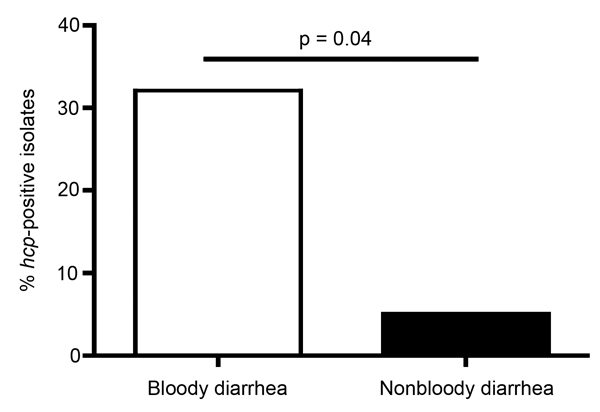Volume 20, Number 6—June 2014
Dispatch
Identification of Possible Virulence Marker from Campylobacter jejuni Isolates
Figure 2

Figure 2. Percentage of hcp-positive Campylobacter jejuni strains isolated from patients in Vietnam who had bloody diarrhea and nonbloody diarrheaPatients who were hospitalized because of Cjejuni infection were scored for the presence of bloody diarrhea or nonbloody diarrhea, and presence of the hcp type-six secretion system (T6SS) marker in strains isolated from the patients was determinedOf patients with bloody diarrhea, 32% were infected with hcp-positive strains; of patients with nonbloody diarrhea, 5% were infected with hcp-positive strains.
Page created: May 16, 2014
Page updated: May 16, 2014
Page reviewed: May 16, 2014
The conclusions, findings, and opinions expressed by authors contributing to this journal do not necessarily reflect the official position of the U.S. Department of Health and Human Services, the Public Health Service, the Centers for Disease Control and Prevention, or the authors' affiliated institutions. Use of trade names is for identification only and does not imply endorsement by any of the groups named above.